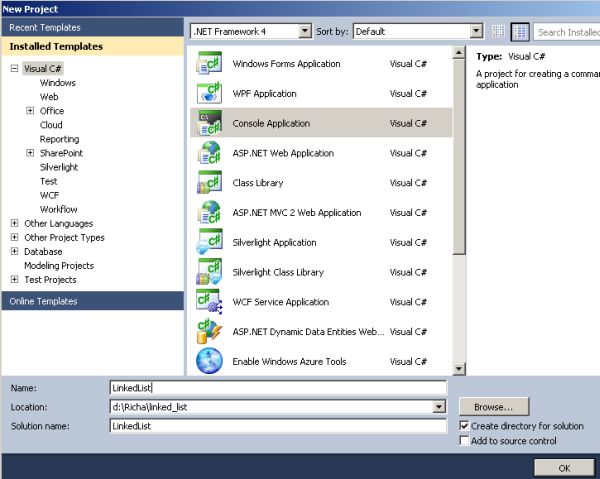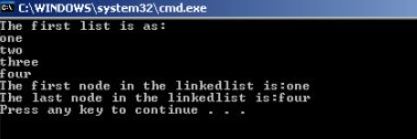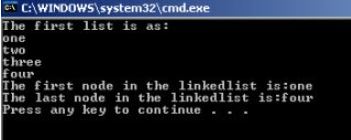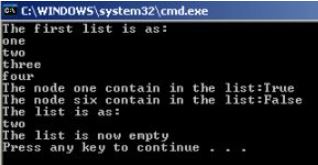Introduction
LinkedList<T> represents the doubly linked list, where T is any specific datatype. It represents the collection of nodes, and each node contains an element. Each node is linked to the preceding node and the following node. The doubly linked list only knows the first and the last node. There are various operations that we can perform in the LinkedList.
In this article, I explain how to create a LinkedList and how we perform the operations on a LinkedList. For this, the following steps are used.
Step 1. Open Visual Studio 2010 and click on File->New->Project
click on the Console application. Give the name of the project as LinkedList.

Step 2. Creation of the LinkedList
The LinkedList can be created as.
Some of the methods that we use for adding the elements to the list are.
- AddFirst(): It adds the node at the first position in the LinkedList.
- AddLast(): It adds the node at the last position in the LinkedList.
- AddBefore(): It adds the node before the given node.
- AddAfter(): It adds the node after the given node.
Now to add the nodes on the empty list that I created, named LinkedList, write the following code.
Display both the list
To display both lists, write the code as.
Output

Step 3. Perform various operations on the linked list
- Count(): Count () is used to count the number of nodes/or elements in the linked list.
Example
Output

- First(): The First() method is used to get the first node in the LinkedList.
- Last(): The Last() method is used to get the last node in the LinkedList.
Example
Output

- Contains(): It determines whether the node is contained in the list or not. If yes, then it gives true otherwise false.
- Remove(): Removes the first occurrence of the specified value from the LinkedList<T>.
- RemoveFirst(): Removes the node at the start of the LinkedList<T>.
- RemoveLast(): Removes the node at the end of the LinkedList<T>.
- Clear(): It clears the list.
Example
Output

Summary
In this article, I explained how to create a LinkedList and the various operations on the LinkedList.